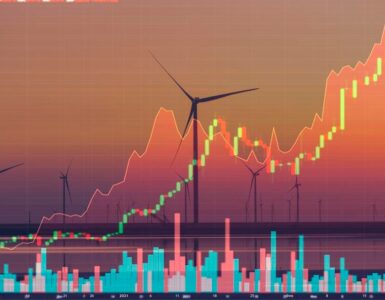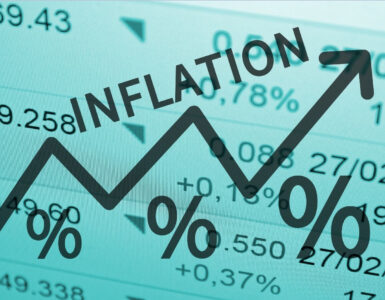The Federal Reserve on Wednesday said it is once again turning to its most powerful weapon to tamp down the hottest inflation in 40 years: Boosting interest rates.
The central bank raised its benchmark interest rate by 0.75 percentage point, marking the fifth hike this year and the third consecutive increase of that size. Higher rates increase borrowing costs for businesses and consumers, who will now be coping with a triple dose of three-quarters of a percentage-point hikes — a boost that could make a big impact on your budget.
The Fed is aiming for a delicate balance, seeking to tamp demand for purchases and thereby cool inflation while avoiding a recession. Federal Reserve Chair Jerome Powell has warned that failing to rein in inflation could result in “far greater pain.” But already, Americans are paying a lot more than they were a year earlier for everything from home loans to credit cards due to the ongoing rate hikes.
“Credit card rates are the highest since 1995, mortgage rates are the highest since 2008 and auto loan rates are the highest since 2012,” Bankrate chief financial analyst Greg McBride said in an email after the rate hike announcement. “With more rate hikes still to come, it will be a further strain on the budgets of households with variable rate debt such as home equity lines of credit and credit cards.”
Given higher costs for borrowing, Americans should focus on paying down their high-cost debt, such as credit cards, and boost their emergency savings as a bulwark against an economic slowdown, McBride recommended.
What rate hikes cost you
Every 0.25 percentage-point increase in the Fed’s benchmark interest rate translates to an extra $25 a year in interest on $10,000 in debt. That means the latest 0.75 percentage-point hike will add an extra $75 of interest for every $10,000 in debt.
But that’s on top of borrowing costs that have already jumped this year.
The Fed’s five hikes so far in 2022 have increased rates by a combined 3 percentage points, or $300 in interest added on every $10,000 in debt.
Potential Fed interest rate hike stokes fears of economic downturn 05:20© Provided by CBS News
Will another big hike impact the stock market?
Following disheartening inflation data last week, the market swooned in anticipation of a big rate hike on Wednesday. Even though inflation is cooling slightly, it’s not receding as quickly as economists had hoped. Even more alarming, core inflation data — which excludes volatile food and fuel prices — rose in August.
“[T]he Fed’s rate hikes are not working, at least [not] yet; and that inflation in the real economy is getting worse, not better,” noted Brad McMillan, chief investment officer for Commonwealth Financial Network, in a research note. “Higher rates mean lower stock values.”
Stocks tumbled after the announcement, with the Dow Jones Industrial Average shedding 0.7% in Wednesday afternoon trading. In its Wednesday statement, the Federal Reserve said it “anticipates that ongoing increases” in the target range for the federal funds rate “will be appropriate,” signaling that more rate increases could be forthcoming.
Credit cards and home equity lines of credit
Credit card debt will become more expensive, with higher APRs hitting borrowers soon after the rate hike.
Rates for credit cards have already risen in response to the Fed’s previous rate hikes, with the average APR on a new credit card offer now at 21.59%, or more than 2 percentage points higher than at the start of 2022, according to LendingTree chief credit analyst Matt Schulz.
“2022 has been a pretty brutal year for folks with credit card debt, and unfortunately it is likely to get worse before it gets better,” he said in an email.
Loans with adjustable rates may also see an increase, including home equity lines of credit and adjustable-rate mortgages, which are based on the prime rate.
What’s the impact on mortgage rates?
Fixed-rate home loans, such as 30- and 15-year mortgages, are likely trend higher in the weeks following the Fed’s decision, said Jacob Channel, senior economist for LendingTree, in an email.
That’s bad news for prospective buyers, who are already dealing with sharply higher mortgage rates compared with a year ago. Earlier this month, the average interest rate on a 30-year home loan hit 6% for the first time since 2008.
By comparison, the average rate on a 30-year mortgage stood at about 3.1% a year ago — which means the increase to today’s rate of 6% adds about $520 a month in interest costs to a $300,000 loan, Channel noted.
However, it’s possible that mortgage rates may not move significantly following the Fed’s decision, he added. “Remember that while the Fed’s actions do impact mortgage rates, it doesn’t directly set them,” Channel noted.
Savings accounts, CDs
If there’s one bright spot from the Fed rate hike, it’s the impact on savings accounts and certificates of deposit.
Interest rates at savings accounts should rise, but it might be slower than one might expect, noted Ken Tumin, a banking expert at DepositAccounts.com. That’s because many banks are “flush with deposits and aren’t aggressively raising deposit rates,” he added.
Since May, online savings accounts have increased their rates from 0.54% to 1.81%, he noted. Meanwhile, online 1-year CDs have jumped from 1.01% to 2.67% in the same time.
That’s an improvement on what savers used to get, but it’s still trailing the rate of inflation. With inflation at 8.3% in August, savers are essentially losing money by putting their cash into a savings account earning about 2%. Still, it’s better than the stock market, which this year is down almost 20%.
What’s the impact on student loans?
Borrowers who take out new private student loans should prepare to pay more as rates increase. The current interest range for federal loans is between about 5% and 7.5%.
That said, payments on federal student loans are suspended with zero interest until December 31 as part of an emergency measure put in place early in the pandemic. President Joe Biden has also announced some loan forgiveness of up to $10,000 for most borrowers and up to $20,000 for Pell Grant recipients.
How do higher rates impact crypto?
Cryptocurrencies like bitcoin have dropped in value since the Fed began raising rates; so have many previously high-valued technology stocks. Bitcoin has plunged from a peak of about $68,000 to under $20,000.
Higher rates mean that safe assets like Treasuries have become more attractive to investors because their yields have increased. That makes risky assets like technology stocks and cryptocurrencies less attractive, in turn.
Still, bitcoin continues to suffer from problems separate from economic policy. Two major crypto firms have failed, shaking the confidence of crypto investors.
Could the rate hike cause a recession?
The question is whether Wednesday’s rate hike can help temper inflation without sending the U.S. economy into a recession.
Some economists believe a recession is likely, given that the rate hikes will slow spending from consumers and businesses. At the same time, inflation is causing some Americans to tighten their budgets, which could also weaken the economy given that 70 cents out of every $1 in GDP is tied to consumer spending.
“We expect consumer spending will continue to slow and contract” due to inflation, noted Erik Lundh, principal economist at The Conference Board, a business organization. “We expect a brief and mild recession” in the fourth and first quarters.
Even so, other economists say it’s still possible that the Fed could engineer a “soft landing,” where the economy weakens enough to slow inflation, hiring and wage growth without tumbling into recession.
Could the rate hikes be reversed?
Stock prices rose in August based on hopes the Fed would reverse course, but it looks increasingly unlikely that rates will come down anytime soon.
Economists expect Fed officials to forecast that the key rate could reach 4% by the end of this year. They’re also likely to signal additional increases in 2023, even to 4.5%.
—With reporting by the Associated Press.










